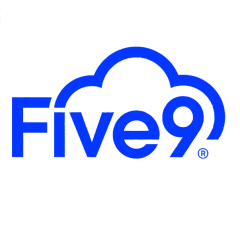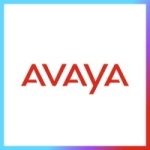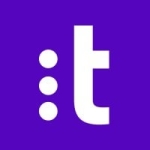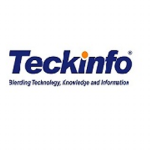What is our primary use case?
We have many different lines of business within our company, with different operating companies. And we have many contact centers in about 34 countries. Some of those contact centers are relatively small and may support one type of product offering. Our contact centers are country-specific as well.
We're using a number of Five9's applications. Obviously, that includes the core product, which is their virtual contact center application. That application provides voice contact center routing with reporting and recording. There are also workforce management and analytics tools. We also use their chatbot, artificial intelligence, and Virtual Agent tools.
How has it helped my organization?
The solution has certainly reduced our costs.
And it has enabled us to be very agile and react quickly to the business requests that may come in. For example, in the COVID environment, one of our contact centers was still on a legacy environment and, all of a sudden, the employees had to work from home but they didn't have a work-at-home model. We moved them to Five9 in seven days. So we can really move quickly.
We're using the WorkForce Optimization's interaction analytics, and that has helped the business to transform customer engagement. It helps to identify the "hot words" that are coming in, what people are actually calling in about. In addition, it does sentiment analysis that can be used to identify and train people who are struggling or using the wrong tone.
Before using the WFO and its analytics, our quality teams would listen to only 5 percent of contacts a week, per employee, which is a very small part of what an employee is doing. It could have been that a QA manager happened to evaluate five bad calls, but the other 150 calls that the person took that week were all great. Now, this tool does an automatic evaluation of 100 percent of their calls. It has certainly helped the QA teams in their training, and that, in turn, helps our clients.
That 100 percent evaluation has also helped agent productivity because QA can automatically look at who is using those words that we don't agents using, such as "mm-hmm" and "let me check" on a call. They're able to train those folks so it has certainly helped.
Another benefit is that the Intelligent Virtual Agent has enhanced our ability to route the call to the correct person or the correct team and increased what we call first-call resolution. That, in turn, frees those agents up for somebody else. I'm sure the optimized routing capabilities are helping us meet our SLAs with less staff.
Five9 ran a customized project for us that allowed us to do chat translation. We now have the ability to chat in about 60 languages. Chats get converted to English before they go to an analyst. The analyst can type a reply in English, and it goes back to that agent in their native tongue. That has certainly been a great benefit for our colleagues in different countries to help them feel comfortable chatting about HR questions in their native language, versus having to do it in English.
It has been a really great tool to bring into our toolbox. It gives us the same technology globally as opposed to having many different environments.
The ability to have our negotiated rates leveraged even by some of our small five/six-person centers has been helpful. A small, local center is not going to have the same buying power as we do by deploying a global environment. And the standardization helps our tech staff and business teams as well. Previously, we had six to eight different types of platforms and systems, and they would have to learn all of them. Now, they have the same tool globally and can do follow-the-sun models much more easily because it's all in one platform.
What is most valuable?
We are using the WorkFlow Automation feature, and it is delivering on what the business wanted, notifying staff if they're in a particular "state" longer than their supervisors feel they should be. It sends out reminders such as, "Remember to update your state from this to that." More importantly, it informs their managers and supervisors. It's a good tool. We use their dashboards from their WFA tool, which aren't the best, but they're okay. And we also use the WFA to make bulk-load changes to skills during our peak seasons.
We use the solution's WorkForce Optimization heavily, and we are very happy with that tool. There is a bit of a lag, longer than I would like, taking half an hour to an hour, before recordings are available in the tool. The business doesn't mind that, but I run a tech team and when we're doing certification and testing, it makes things a bit more challenging. We need to watch the clock until we can confirm that it's functioning as expected during certain tests. But that doesn't impact the business, because it's not looking at recordings that quickly.
And in terms of integrating with various CRM tools, like Salesforce, ServiceNow, and Dynamics, their adapters are pretty straightforward and they work very well. A lot of the work there is on the CRM side of our organization to decide what we are going to pull and populate using the adapters. That requires a lot of effort by the CRM teams, but not so much of my time with Five9 anymore, because those adapters are built-in, which is nice.
What needs improvement?
Their email channel has some challenges due to how our security team made us integrate with it. But Five9 is working on a new enhancement that should be coming soon and mitigate some of those challenges.
There have also been some challenges in being able to keep the format of an original email. The solution acts as a proxy, but it's not bringing over the full format that the email came in with. That has not been an issue with any of our email digital channel integrations except for one of our lines of business. That particular line heavily uses that type of formatting. It still has its clients do things in ways where their clients highlight something with a particular color, and that just doesn't come through. So Five9's email channel isn't as good as some other vendors' email channels that I've seen. But there is an upgrade coming, and they have promised that those items on our wish list will be in a release coming out soon.
Their out-of-the-box reporting is great in some areas, but you need a supervisor's license to look at the real-time dashboard. Many of our businesses like to have our agents look at those real-time dashboards. We'd either have to pay for a supervisor license for every agent and configure it accordingly, or we would have to deploy a different tool based on Five9's WFA model, where they would go to a link and the data would be there.
In addition, there are some carrier-relation challenges in smaller countries when it comes to preserving caller ID, at times. These things would be a challenge for any vendor because it's more of an internet-based call in those countries, and the local telcos end up thinking, "That's not originating from our country, somebody is spoofing a number." It's a problem across the board. We encounter similar things with Zoom and other tools we've looked at.
Buyer's Guide
Five9
October 2025
Learn what your peers think about Five9. Get advice and tips from experienced pros sharing their opinions. Updated: October 2025.
868,787 professionals have used our research since 2012.
For how long have I used the solution?
We started engaging with Five9 in 2018 and our first go-live deployment was in January of 2019.
What do I think about the stability of the solution?
They had some network challenges a couple of years ago but they brought in new leadership that implemented a change control process with more peer reviews of updates. They could do a better job certifying and rigorously testing all their code. I know they do that for large releases but it should even be done for patches. But that's the same with other vendors. Sometimes we find bugs after upgrades, and sometimes they're minor. But overall, they're at four-nines, which is comparable to other platforms we worked with.
What do I think about the scalability of the solution?
The scalability is great. The idea that you can add and reduce licenses on a monthly basis makes it scalable.
How are customer service and support?
We use their hypercare service so we get responses almost immediately and get action on our environments. Our experience with those guys has been very good across just about all of their product lines. Some issues do take longer to resolve than we might like, especially when it's a larger type of issue impacting multiple clients. Ideally, in the contact center space, you really want zero issues. But they're very responsive, and we can escalate and get leadership involved in those few instances when it's needed, without issue.
How would you rate customer service and support?
Which solution did I use previously and why did I switch?
We used a number of solutions including a Cisco on-premises solution called UCCE, as well as NewVoiceMedia cloud service, and Avaya Contact Center on-premises infrastructure. We had NICE as the call-recording platform and IEX for workforce management. We had to work with multiple vendors just to provide a similar level of service for voice channels. We also used 4Com for a smaller cloud-based environment and we had an environment with Genesys 2, which was a hybrid cloud environment. We no longer use any of them.
We needed to be able to extend contact center routing for one line of business around the globe. We had people that needed the service first in the US contact center, then in Latin America, EMEA, and Malaysia. Our on-premises environment didn't support that model because of latency and related issues that it would run into. We also just couldn't extend our infrastructure that far.
Five9 had a good global presence with global PoPs (points of presence) reducing audio latency. In a region like Australia or Tokyo, we have the audio stream from those PoPs over to our locations. Those PoPs were good for where our footprint was. Another factor was that the price point was very good. And the interface was intuitive and straightforward compared to Cisco's complex platform, which was made up of four different platforms. You had to know how to code in all four and it was very arduous. Five9's flexibility and willingness to work with us, along with direct communication with senior leadership, made a difference. They provided good support response time on support issues, and they were a leader on industry review sites, which added to their appeal. Five9 seemed to be a good fit for us.
How was the initial setup?
The solution is software as a service or, in this case, contact center as a service. There is nothing on-premises in terms of infrastructure. The only thing on-premises is that we'll take the reporting data and put it aside for historical purposes.
We had a couple of challenges when deploying it because our first integration was pretty complex. But we identified those challenges when we went through our system and user acceptance testing and addressed them ahead of time.
In terms of maintenance, as the tech team, we manage and look at all of their change controls when they're making changes. We have to move our centers out of "harm's way" when they're making some of those changes because we're 24/7 and all around the globe. We do certification testing in our dev environment as much as possible before rolling out changes to production domains. We do testing after the fact as well. We're a little stricter than most. When we talk to our Five9 technical account manager, he says their other customers never look at these things. If they have a problem, they open a case. But we like to test everything.
What about the implementation team?
We did it working with Five9's professional services team. On our side, my tech team along with some business resources were involved.
It's hard to say how many people from our organization were involved because we have 110 contact centers. In some cases, there was one person from Five9 and in other cases, there were multiple Five9 people. When needed, they would bring in their various subject matter experts on projects at different points in time.
In general, there's a project manager and one of those technical resources across the disciplines who are assigned. For our largest center, which was really complex, there were three dedicated SMEs and a PM.
What's my experience with pricing, setup cost, and licensing?
Their license structure, out of the box, is better than that of other providers and their pricing is much less than other vendors we've looked at. We continue to kick the tires on a couple of different solutions to make sure we're still getting the best value. It's part of our due diligence to look at other things. They are very willing to negotiate with us to reduce usage rates for long-distance or inbound phone numbers. In some cases, their rates might be higher than what we're paying locally, but they will usually match it or beat it.
Their one-time charges for core products and static deployments are really reasonable. You get into higher price points for bots and IVA types of infrastructure. Those are one-offs and depend on the complexity and customization you end up needing on them. We've had them sharpen pencils at times so we can progress with those efforts, and they're willing to do that. We have a really great account team.
Five9's product is very comparable to other products. It has the expected functionality, like core routing and queuing and voice channel routing. But what we found useful was that it has a utility type of pricing model. That meant we could add digital channel routing, email, chat, and SMS, to a contact center with a small staff, at a minimal cost.
In our previous worlds, with on-premises solutions, we'd have to spend a bit of money to enable those feature sets. As a result, the first line of business that wanted a feature ended up absorbing an exorbitant price, and then, once we had it in our environment, other teams could leverage it. We're happy with all of Five9's features, but the cost model was the big benefit for us. We no longer have to make that big investment for the features.
The flexibility of the licensing structure is very beneficial as well because we have very busy time periods, while, in other time periods we reduce our staff by 75 percent in one of our larger centers. Previously, with our on-premises solution, we had to buy and size for the peak. Now, we just use what we need at the time and then reduce it. The following year, we can ratchet it back up again.
What other advice do I have?
We use the Intelligent Virtual Agent, and it works really well. There's a bit of effort involved to tune it and get it up and running correctly, which would be the case with probably any other provider. But you do really need to spend the time designing what you want and tuning it so that it delivers the different dialects. Since we are a global company, we have people calling in from all over the world. It's always a bit of a challenge to get it to learn those different dialects. When people are speaking in English, as an example, we have IVAs that the Irish use and that the English use, and other places in Central Europe call in using English, and they have their own accents as well.
You have to do your due diligence and identify what your metrics are going to be and ensure those are met with the solution's out-of-the-box reporting tools. If not, understand the requirements for customized reporting or dashboards, because reporting is a key piece. We went through an RFP. We found they were secure and scrutinized privacy risks closely. Five9 passed all our security checks, but each company has its own rules. Network and latency are important to check, but we really liked their PoPs. If you're looking at alternatives, compare Five9 to what other vendors are offering.
Disclosure: PeerSpot contacted the reviewer to collect the review and to validate authenticity. The reviewer was referred by the vendor, but the review is not subject to editing or approval by the vendor.


















Hi Irene, thank you for taking the time to review Five9. Your feedback is heard and very much appreciated!